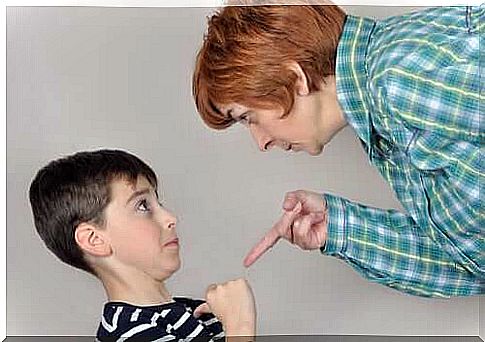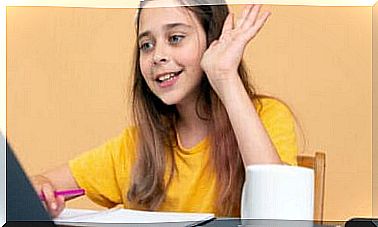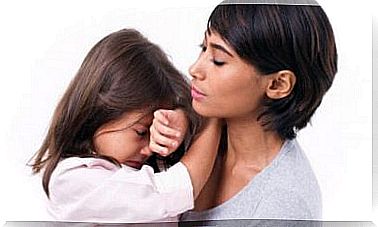Positive And Negative Punishment: The Differences

Often, fathers and mothers use punishments to try to correct their children’s bad behavior. However, most parents use this method without knowing the difference between positive and negative punishment.
This behavior modification technique is the least recommended and should only be used in extreme cases. It is a measure that does not allow children to understand what mistakes they have made and how they can improve their behavior.
The differences between negative and positive punishment
Punishment is used for the purpose of not causing repetition or greatly reducing unwanted behavior. There are two types of punishment: positive punishment and negative punishment. In the course of this article we will explain the difference.
Positive punishment
To apply positive punishment, the child must be given an unpleasant stimulus, with the aim of penalizing and correcting undesirable behaviors. It’s about giving the little one something he doesn’t like.

The unpleasant stimulus intended to punish undesirable behaviors can be to perform an action, provide an object, convey an emotion, etc. Some examples of positive punishment could be:
- Shout.
- Spank.
- Put the baby face to the wall.
- Having an angry expression.
- To insult.
- To threaten.
However, this way of educating is by no means pedagogical because it encourages violence, aggression, revenge, etc. Therefore, one must try to avoid it.
Negative punishment
Negative punishment is to eliminate a pleasant stimulus when the child has undesirable behaviors. It’s about taking away positive reinforcement or something he likes. As in the previous case, the stimulus to be removed can be an object, an emotion, etc. For example, some negative punishments that can be applied to children are:
- Ban on watching television.
- Prohibition to leave the house.
- Don’t let them play.
- Remove their favorite toy.
- Don’t give them sweets.
- Send them to the room.
Consequences of positive and negative punishment
It is very important to know that this behavior modification technique should only be used when none of the other educational methods have achieved the desired results. We refer to:
- The use of dialogue and reflection.
- Positive reinforcement.
- Change the situation.
- Ignore undesirable behaviors.
- Give time to reflect and keep some distance.
- Propose alternative choices to solve the problems.
When deciding to give punishment, it is important to do so immediately after the undesirable behavior. Also, you need to explain why and try to stay calm at all times.

In the same way, it is necessary to reward (with a compliment, an affectionate gesture, etc.) and encourage those alternative behaviors that the child adopts to remedy a previous misconduct. For example, if the child has been punished for not putting the toys in place, when he does, let him know that he did the right thing.
In conclusion, to give children a good education, we advise you to avoid the frequent use of punishments. Excessive use of them could have negative effects on children and their relationship with the environment around them. They might try:
- Fear.
- Insecurity.
- Stress.
- Social and coexistence problems.
- Anxiety.
- Subjugation.
- Low self-esteem.
- Aggression.
If you are one of those parents who use traditional punishment as the only way to correct children’s behavior, it’s time for a change. Try to learn and practice alternative solutions to punishments.









